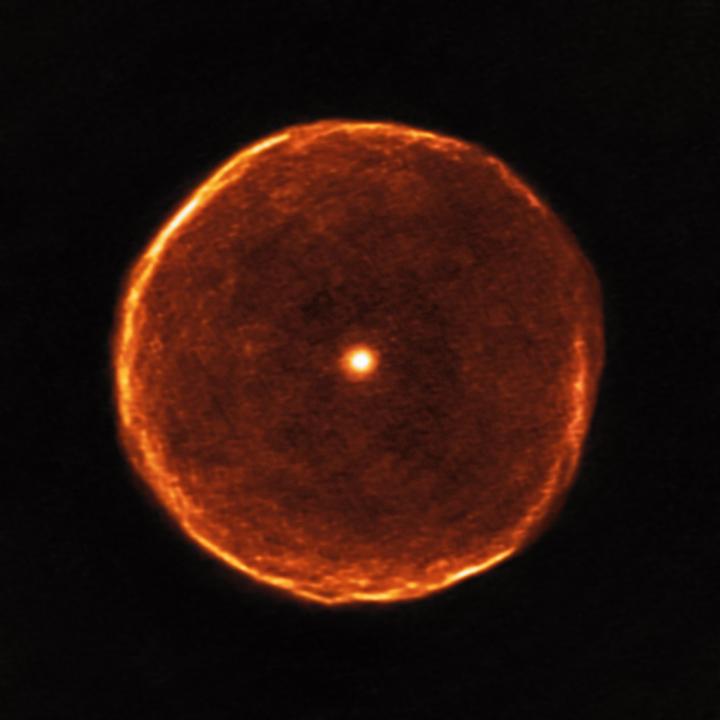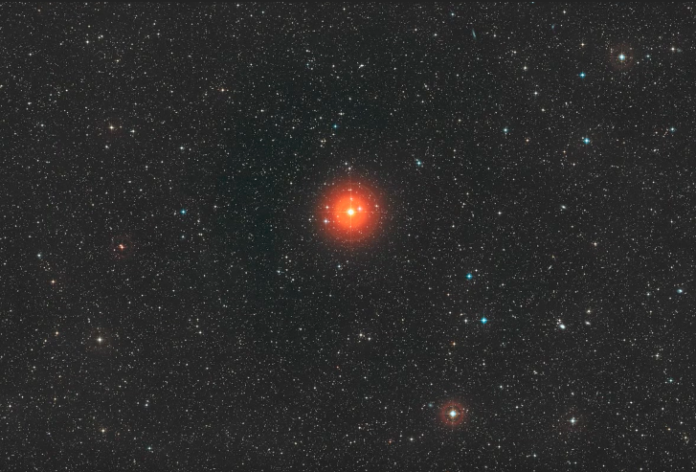A very red star that’s been found in the distant constellation of Antlia has been observed by astronomers using the Atacama Large Millimeter/submillimeter Array (ALMA), and what they’ve discovered about it is rather exciting. The star in question is called U Antliae, and as well as varying in brightness from week to week, the fascinating phenomenon also appears to have a thin spherical shell around it.
U Antliae is a carbon star that went through a short period (a few hundred years) of rapid mass loss around 2700 years ago. As it went through this period, the shell material was ejected at high speeds and is what can be seen today. Upon closer examination of the shell, astronomers also discovered evidence of thin gas clouds.

Only through the use of the ALMA radio telescope could experts get a glimpse of this spectacular view and is the clearest observation to date that we’ve had of the U Antliae shell. It’s not just a single image either. The images that ALMA produces are three-dimensional with each individual part being observed at a different wavelength. Because of a phenomenon called the Doppler Effect, each part will show images of gas traveling at different speeds either towards or away from the person observing.
Another amazing feature of this shell is how symmetrically round it is. It’s also incredibly thin. By observing the shell’s different velocities, experts can get to understand the chemical composition of this cosmic bubble. In doing this, they’ll gain a much deeper understanding as to how these shells form by mass loss, and how early stars formed in the Universe. It will also help explain how galaxies came to evolve into what they are today.
More News to Read
- New Studies Suggest Smartphone Apps are Effective in Treating for Depression
- Researchers Develop New System That Allows the Transferring of Code Across Programs
- Scientists Uncover Graphene Superlattices
- What are Your Chances of Becoming an Astronaut?
- Do you Know How Tight is Your Smartphone’s Security?

